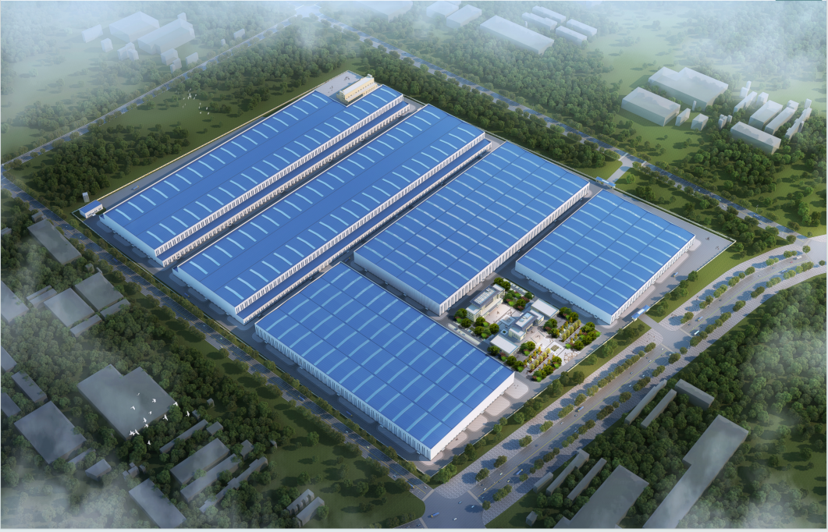Business Footprints
Contact Us

Tianjin Binhai Energy Development Co., Ltd. is a domestic main board listed company of Risun, formerly known as Lighthouse Coatings. In 1992, it was registered with the Tianjin Administration for Industry and Commerce, and the company's stock was listed and traded on the Shenzhen Stock Exchange in 1997, with the securities code 000695.SZ. In October 2021, Risun Holding Limited acquired Binhai Energy and strategically entered the new energy industry. The company's office is located in Fengtai District, Beijing. It has successively acquired or established subsidiaries such as Inner Mongolia Xiangfu New Energy Co., Ltd., Baotou Risun New Energy Technology Co., Ltd., Qingshuihe Risun Energy Technology Co., Ltd., and Beijing Risun New Energy Co., Ltd., prioritizing the layout of negative electrode materials and photovoltaic industries.
In terms of negative electrode materials, the company relies on Risun's multiple global first product lines in the fields of coke/chemical/materials, leading technology and experience in carbon materials such as coal tar/asphalt/needle coke, as well as research and development results in the new energy industry since 2005, to form the company's integrated advantages, green power advantages, low-cost leading advantages, and product differentiation advantages. The integration advantage is mainly based on the collaborative development of the company and Risun in the battery industry, naturally possessing abundant and high-performance raw material resources. At the same time, a 300,000 tons/year integrated negative electrode material industrial park is under construction, which connects the entire industry chain from coal to high value-added graphite negative electrode materials. Combined with strong management capabilities, it can ensure product quality stability; the advantage of green power lies in the fact that the company has planned a 580 MW source grid load storage project with an annual power generation of 1.5-1.9 billion kWh, which has passed carbon footprint certification, thus creating a low-carbon green factory; it fully utilizes the advantages of the industrial cluster located in the largest negative electrode material production base in China, where graphite production accounts for about one-third of the country's total, as well as its latecomer advantages in technology, equipment, and digital empowerment, forming a systematic cost leadership advantage; the advantage of product differentiation lies in the complete range of product types, which can be applied to new energy vehicles, small power, grid energy storage, household energy storage, 3C electronics, power tools, drones and other application fields. Differentiated products can also be customized according to customer needs. Based on the above advantages, the company has steadily built a complete industry chain for negative electrode materials, established a sound customer service system and mature production management system, obtained quality, environmental, occupational health and safety management system certifications, and established strategic partnerships with well-known enterprises in the industry.
In terms of the photovoltaic industry, on October 24, 2023, it signed an investment cooperation agreement with the Baotou Municipal Government to implement an integrated layout of the entire photovoltaic silicon material industry chain. It initially plans to construct 10GW/year solar cells, 5GW/year solar modules, 150,000 tons/year industrial silicon, 120,000 tons/year polycrystalline silicon, 40GW/year monocrystalline silicon pulling, 40GW/year monocrystalline silicon slicing and related facilities, supporting new energy generation projects, thus taking an important step towards the crystalline silicon photovoltaic new energy industry.
Since its establishment, the company has been committed to inheriting the R&D innovation genes of Risun and clarifying the strategy of using R&D innovation to support the company's future development. On the basis of 100 scientific research achievements formed in the field of Risun's deep cultivation of carbon materials, the company has cooperated with upstream and downstream customers in research and development, joint research and development, and extensively cooperated with Tsinghua University, Institute of process engineering, Chinese Academy of Sciences, the National Center for Nanoscience and Technology, Beijing University of Science and Technology and other institutions of higher learning and scientific research, established a carbon material research institute, a positive material research institute, a silicon material research institute, a three-level technological innovation system for laboratory development, pilot scale up and production device process research, developed cutting-edge topics such as silicon carbon and silicon oxygen, attracted outstanding talents from enterprises in the head office, and jointly carried out a series of research on practical production related topics such as stabilizing product quality, reducing production costs, and improving product performance. The company plans to have a 100 person R&D team led by 30 PhDs within three years, ultimately becoming a "world's leading new energy company — innovate for the future".